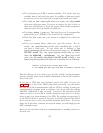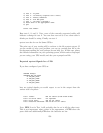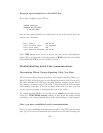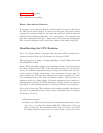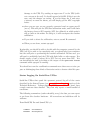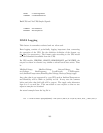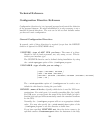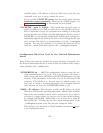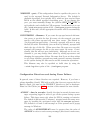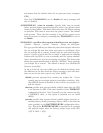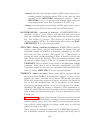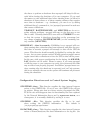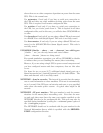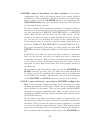
qualified name or IP address of the host (NIS server) and the port
(optional) is the port to use to contact the server.
If you specified UPSTYPE snmp, then the device name becomes
hostname:vendor:community. Please see the SNMP chapter (see
Support for SNMP UPSes) in this manual for more details.
LOCKFILE <path to lockfile> This option tells apcupsd where to
create a lockfile for the USB or serial port in the specified directory.
This is important to keep two programs from reading or writing the
port at the same time. Please note that although the directive name is
LOCKFILE, you are actually specifying the lock file path. apcupsd au-
tomatically appends the name of the device when creating the file. On
most systems, this directive is automatically set by the ./configure
program. You may also explicitly set it during the build process by
using the --with-lock-dir= option of the ./configure program.
Configuration Directives Used by the Network Information
Server
None of these directives are required for proper operation of apcupsd. For
the Network Information Server to work, it must be enabled in the configu-
ration (default) with --enable-nis
NETSERVER [on — off] This configuration directive turns the net-
work information server on or off. If it is on, apcupsd will spawn a
child process that serves STATUS and EVENTS information over the
network. This information is currently used by the Web-based CGI
programs. The default is on. In some cases, for added security, you
may want to invoke a separate information server daemon from the
inetd daemon. In that case, NETSERVER should be off.
NISIP <IP-address> This directive specifies an IP address on which
NIS server will listen for incoming connections. Default value is 0.0.0.0
that means any incoming request will be serviced but if you want it
to listen to a single subnet you can set it up to that subnet address,
for example 192.168.10.0. Additionally you can listen for a single IP
like 192.168.10.1. You may also use the --with-nisip= option of the
./configure program to set this directive during the build.
This directive does not work on Win32 machines because inet
ipton()
is not implemented there.
165



